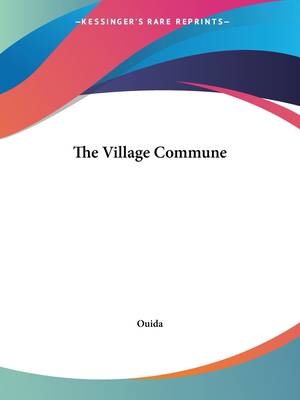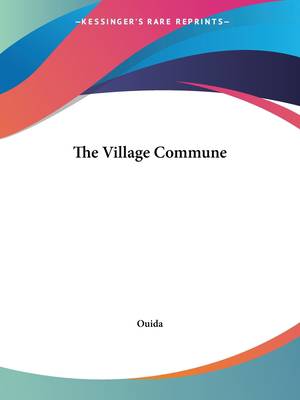
- Retrait gratuit dans votre magasin Club
- 7.000.000 titres dans notre catalogue
- Payer en toute sécurité
- Toujours un magasin près de chez vous
- Retrait gratuit dans votre magasin Club
- 7.000.0000 titres dans notre catalogue
- Payer en toute sécurité
- Toujours un magasin près de chez vous
Description
The Village Commune is a novel written by Ouida, a pseudonym for the English author Maria Louise Ram�����. The book is set in Italy and follows the story of a young Englishman named Geoffrey Hammond who inherits a small village from his uncle. The village, named San Firmin, is home to a group of peasants who have established a commune where they share resources and work together to support each other.Geoffrey is initially hesitant about the commune, but as he spends more time in San Firmin, he becomes enamored with the villagers and their way of life. He begins to fall in love with a local peasant girl named Maddalena, but their relationship is complicated by their different social classes and the disapproval of Maddalena's father.As Geoffrey becomes more involved in the village, he also becomes aware of the political tensions in Italy at the time. The novel takes place in the late 19th century, a time of great social and political change in Italy. The villagers of San Firmin are caught up in these changes, as they struggle to maintain their way of life in the face of modernization and industrialization.The Village Commune is a story of love, politics, and social change. Ouida's vivid descriptions of the Italian countryside and the lives of the villagers bring the story to life, while her exploration of the tensions between tradition and modernity make the novel relevant even today.The lights were blazing brightly; the music was sounding jocundly, the youths and the maidens were going round and round, laughing and chattering as they jumped. The drum stood on a pavement with the honest dog of the mill guarding it, and Carmelo was dancing with Viola, while old Pippo and the miller, sitting on two rush chairs beside the dog and drum, looked on smiling and beating the time.This scarce antiquarian book is a facsimile reprint of the old original and may contain some imperfections such as library marks and notations. Because we believe this work is culturally important, we have made it available as part of our commitment for protecting, preserving, and promoting the world's literature in affordable, high quality, modern editions, that are true to their original work.
Spécifications
Parties prenantes
- Auteur(s) :
- Editeur:
Contenu
- Nombre de pages :
- 208
- Langue:
- Anglais
Caractéristiques
- EAN:
- 9781419186776
- Date de parution :
- 17-06-04
- Format:
- Livre broché
- Format numérique:
- Trade paperback (VS)
- Dimensions :
- 210 mm x 276 mm
- Poids :
- 480 g

Les avis
Nous publions uniquement les avis qui respectent les conditions requises. Consultez nos conditions pour les avis.






